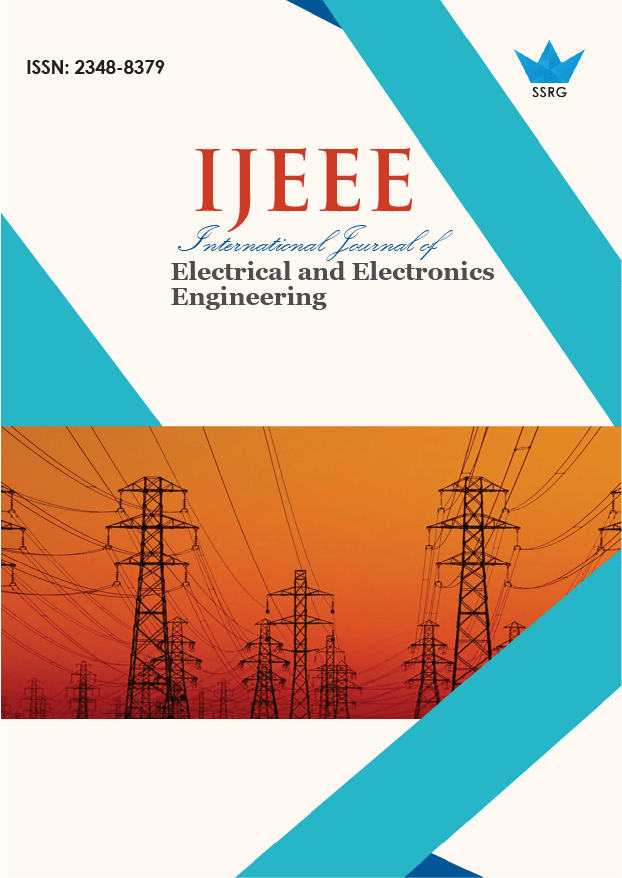Dual Architecture Mechanism for Robust Cybersecurity in Relay Systems

| International Journal of Electrical and Electronics Engineering |
| © 2025 by SSRG - IJEEE Journal |
| Volume 12 Issue 6 |
| Year of Publication : 2025 |
| Authors : Ramana Pilla, R Sasidhar, Malleti Sreedhar, Shaik Nannu Saheb, Vasupalli Manoj, D Sai Kumar |
How to Cite?
Ramana Pilla, R Sasidhar, Malleti Sreedhar, Shaik Nannu Saheb, Vasupalli Manoj, D Sai Kumar, "Dual Architecture Mechanism for Robust Cybersecurity in Relay Systems," SSRG International Journal of Electrical and Electronics Engineering, vol. 12, no. 6, pp. 51-63, 2025. Crossref, https://doi.org/10.14445/23488379/IJEEE-V12I6P105
Abstract:
Relay systems in power-grid control networks remain vulnerable because existing intrusion-detection models neither provide onsite alerts when misclassifications occur nor disclose synthetic data generation methods, hindering operational reliability and reproducibility. This work introduces a novel dual-layer security architecture that couples a high-dimensional machine-learning engine (XGBoost and Random Forest) with hardware alarms (LED and buzzer) for real-time onsite notifications. It employs transparently defined synthetic data-best, average, and worst scenarios generated via with {α1, α2, σ} settings published for each scenario. Experiments on a combined real and synthetic dataset (12,000 samples, 119 features) were deployed on a Raspberry Pi 4 (4 GB RAM, SanDisk A1 microSD). The system achieved 97.5 % accuracy and < 0.5 % false-positive rate, with an average inference latency of 150 MS and peak memory usage of 85 %. Limitations, including edge-device resource constraints and the need for periodic retraining, are discussed, and future work on lightweight neural models and CI/CD pipelines is outlined.
Keywords:
Cybersecurity, Relay Systems, Dual Architecture, Machine Learning, Intrusion Detection.
References:
[1] Heng Chuan Tan et al., “High-fidelity Intrusion Detection Datasets for Smart Grid Cybersecurity Research,” 2024 IEEE International Conference on Communications, Control, and Computing Technologies for Smart Grids (SmartGridComm), Oslo, Norway, pp. 340-346, 2024.
[CrossRef] [Google Scholar] [Publisher Link]
[2] M.A.S.P. Dayarathne et al., “Deep Learning-Based Cyber Attack Detection in Power Grids with Increasing Renewable Energy Penetration,” 2024 IEEE World AI IoT Congress (AIIoT), Seattle, WA, USA, pp. 521-526, 2024.
[CrossRef] [Google Scholar] [Publisher Link]
[3] Mofe O. Jeje, “Cybersecurity Assessment of Smart Grid Exposure Using a Machine Learning Based Approach,” Computer Science Machine Learning, 2025.
[CrossRef] [Google Scholar] [Publisher Link]
[4] Shaharier Kabir, Mehnaz Chowdhury, and Md. Saniat Rahman Zishan, “Proactive Detection of Cyber-Physical Grid Attacks: A Pre-Attack Phase Identification and Analysis Using Anomaly-Based Machine Learning Models,” Research Square, 2025.
[CrossRef] [Google Scholar] [Publisher Link]
[5] SI-Wei Lee, and Jen-Yeu Chen, “Intrusion Detection for Power System Security by Ensemble Learning with Auxiliary Classifier and Feature Selection,” pp. 1-9, 2024.
[CrossRef] [Google Scholar] [Publisher Link]
[6] Igor M.A. Santos, George R.S. Lira, and Pablo B. Vilar, “Detection of False Data Injection Attacks in Power Systems Using Deep Autoencoder with Attention Mechanism,” 2024 Workshop on Communication Networks and Power Systems (WCNPS), Brasilia, Brazil, pp. 1-7, 2024.
[CrossRef] [Google Scholar] [Publisher Link]
[7] Nittin Sharma, “An Inclusive Review of Machine Learning Techniques in Securing Power Systems and Recognition of Cyber Attacks,” 2023 International Conference on Power Energy, Environment and Intelligent Control (PEEIC), Greater Noida, India, pp. 164-168, 2023.
[CrossRef] [Google Scholar] [Publisher Link]
[8] Abhijeet Sahu et al., “Multi-Source Data Fusion for Cyberattack Detection in Power Systems,” arXiv Preprint, 2021.
[CrossRef] [Google Scholar] [Publisher Link]
[9] Wei-Chih Hong et al., “Towards Accurate and Efficient Classification of Power System Contingencies and Cyber-Attacks Using Recurrent Neural Networks,” IEEE Access, vol. 8, pp. 123297-123309, 2020.
[CrossRef] [Google Scholar] [Publisher Link]
[10] Xichao Zhao et al., “Power System Cyber-Attack Event Recognition Method Based on Extreme Random Trees,” 2023 IEEE International Conference on Signal Processing, Communications and Computing (ICSPCC), Zhengzhou, China, pp. 1-6, 2023.
[CrossRef] [Google Scholar] [Publisher Link]
[11] Ulaa AlHaddad et al., “Ensemble Model Based on Hybrid Deep Learning for Intrusion Detection in Smart Grid Networks,” Sensors, vol. 23, no. 17, pp. 1-29, 2023.
[CrossRef] [Google Scholar] [Publisher Link]
[12] Shchetinin Eugeny Yu, and R. Velieva Tatyana, “Detection of Cyber-Attacks on the Power Smart Grids Using Semi-Supervised Deep Learning Models,” Discrete and Continuous Models and Applied Computational Science, vol. 30, no. 3, pp. 258-268, 2022.
[Google Scholar] [Publisher Link]
[13] Ilias Siniosoglou et al., “A Unified Deep Learning Anomaly Detection and Classification Approach for Smart Grid Environments,” IEEE Transactions on Network and Service Management, vol. 18, no. 2, pp. 1137-1151, 2021.
[CrossRef] [Google Scholar] [Publisher Link]
[14] Sven Zemanek et al., “PowerDuck: A GOOSE Data Set of Cyberattacks in Substations,” Proceedings of the 15th Workshop on Cyber Security Experimentation and Test, Virtual CA USA, pp. 49-53, 2022.
[CrossRef] [Google Scholar] [Publisher Link]
[15] Partha P. Biswas et al., “A Synthesized Dataset for Cybersecurity Study of IEC 61850 based Substation,” 2019 IEEE International Conference on Communications, Control, and Computing Technologies for Smart Grids (SmartGridComm), Beijing, China, pp. 1-7, 2019.
[CrossRef] [Google Scholar] [Publisher Link]
[16] Wang Xuelei, and Foo Ernest, “Assessing Industrial Control System Attack Datasets for Intrusion Detection,” 2018 Third International Conference on Security of Smart Cities, Industrial Control System and Communications (SSIC), Shanghai, China, pp. 1-8, 2018.
[CrossRef] [Google Scholar] [Publisher Link]
[17] Seungoh Choi, Jeong-Han Yun, and Sin-Kyu Kim, “A Comparison of ICS Datasets for Security Research Based on Attack Paths,” Critical Information Infrastructures Security, Springer, Cham, vol. 11260, pp. 154-166, 2018.
[CrossRef] [Google Scholar] [Publisher Link]
[18] Seungoh Choi, Jeong-Han Yun, and Byung-Gil Min, “Probabilistic Attack Sequence Generation and Execution Based on MITRE ATT&CK for ICS Datasets,” CSET '21: Proceedings of the 14th Cyber Security Experimentation and Test Workshop, USENIX Security Symposium, pp. 41-48, 2021.
[CrossRef] [Google Scholar] [Publisher Link]
[19] Gabriel Intriago, and Yu Zhang, “Online Dictionary Learning Based Fault and Cyber Attack Detection for Power Systems,” 2021 IEEE Power and Energy Society General Meeting (PESGM), Washington, DC, USA, pp. 1-5, 2021.
[CrossRef] [Google Scholar] [Publisher Link]
[20] Hadir Teryak et al., “Double-Edged Defense: Thwarting Cyber Attacks and Adversarial Machine Learning in IEC 60870-5-104 Smart Grids,” IEEE Open Journal of the Industrial Electronics Society, vol. 4, pp. 629-642, 2023.
[CrossRef] [Google Scholar] [Publisher Link]

 10.14445/23488379/IJEEE-V12I6P105
10.14445/23488379/IJEEE-V12I6P105